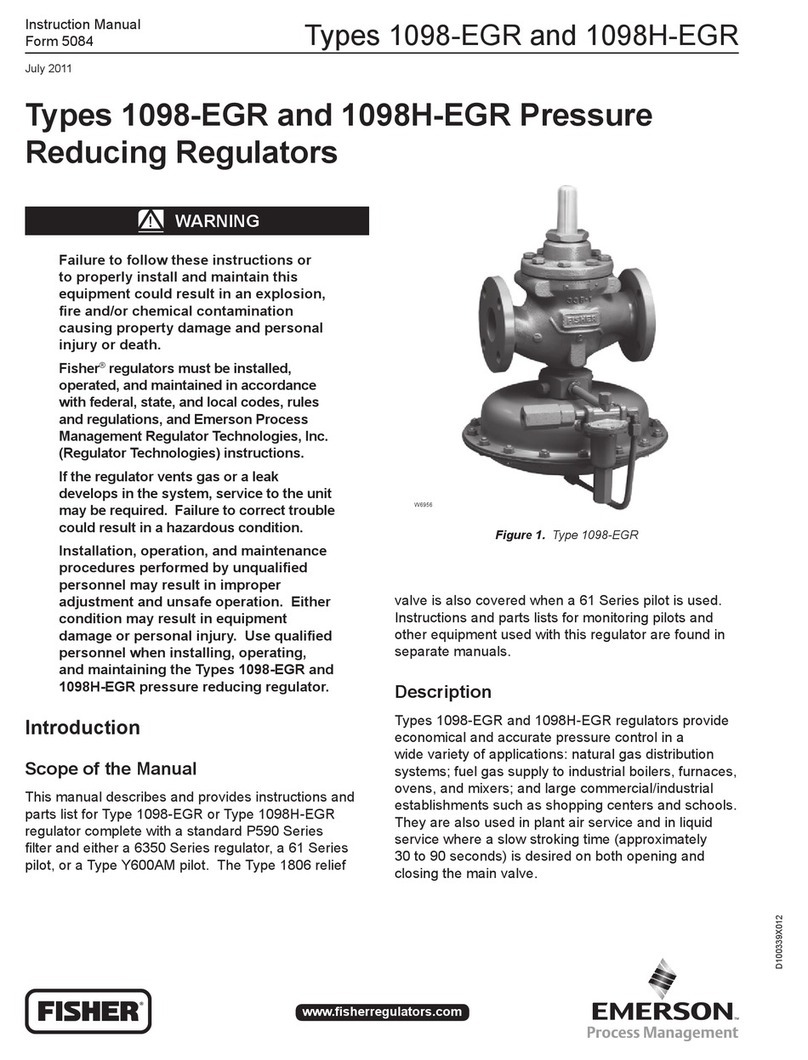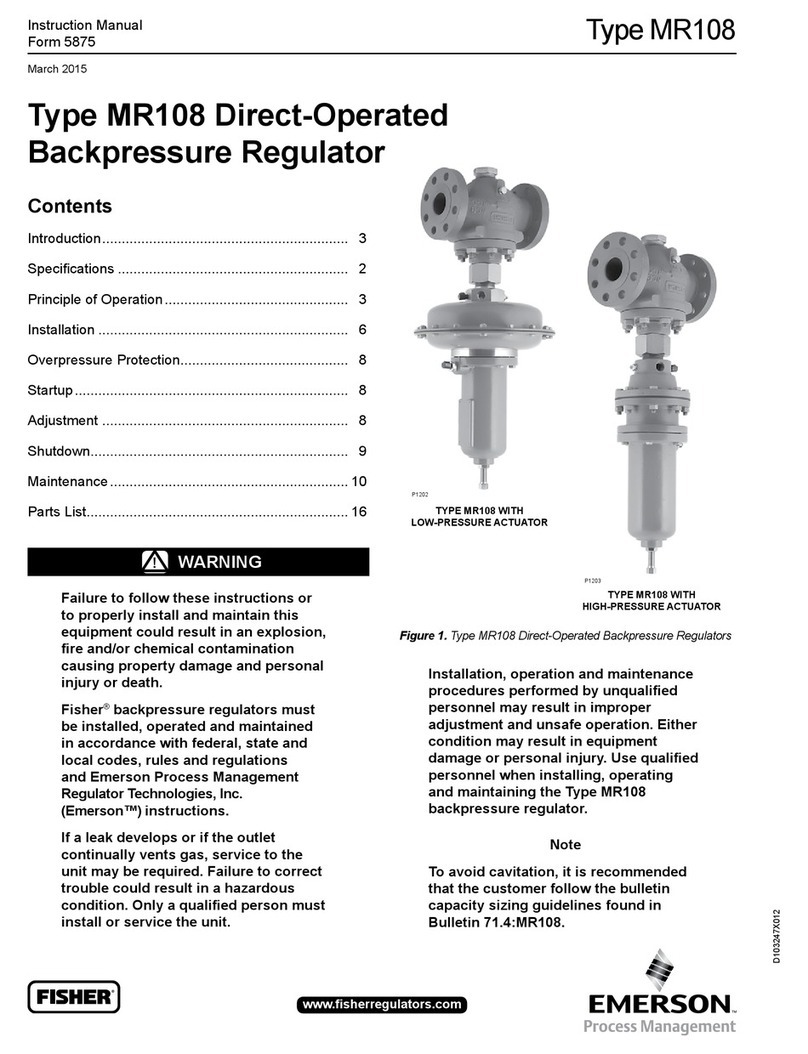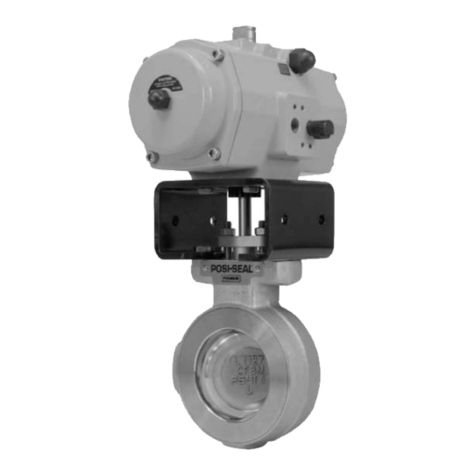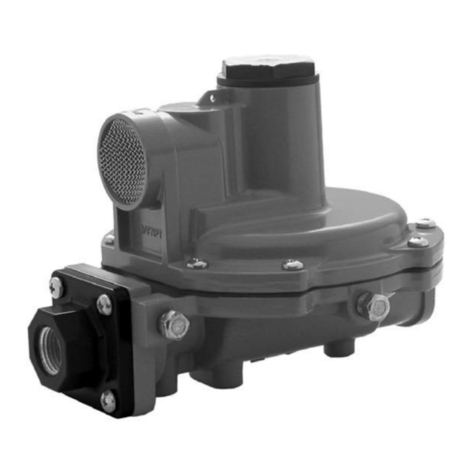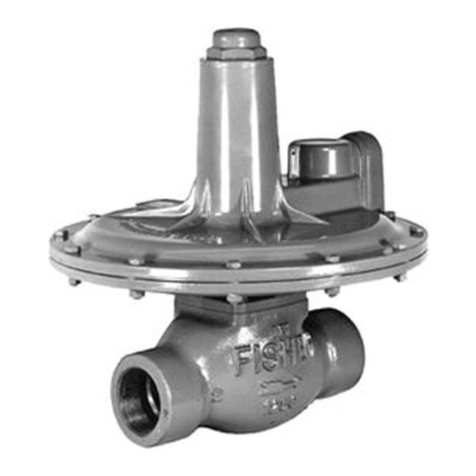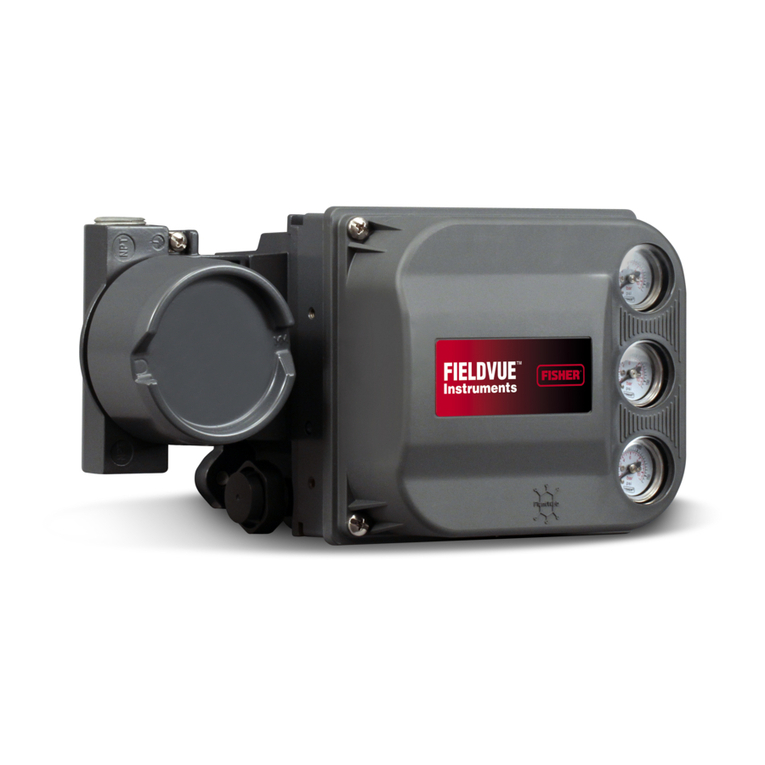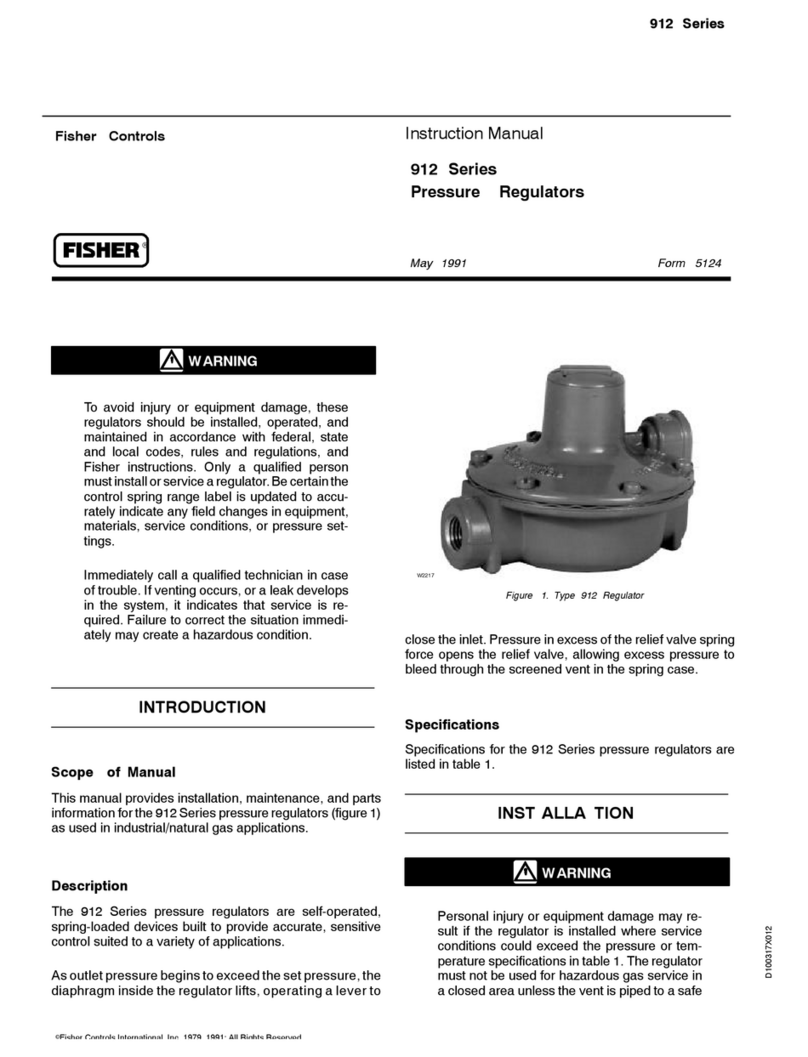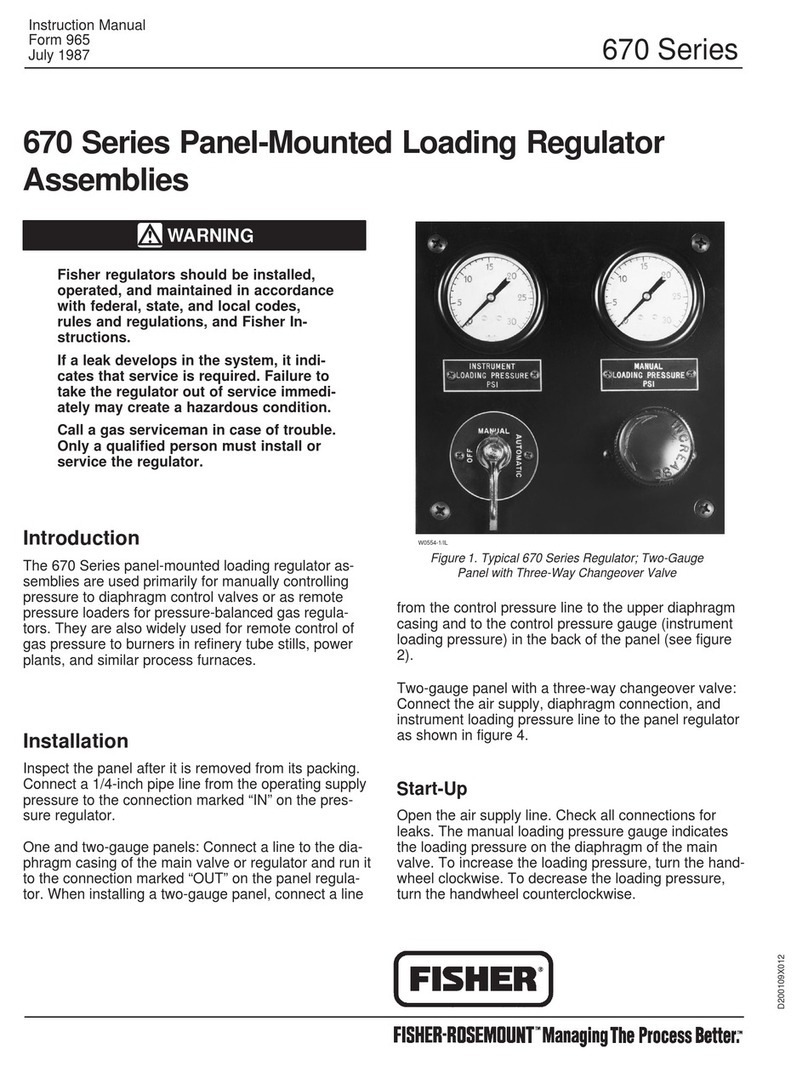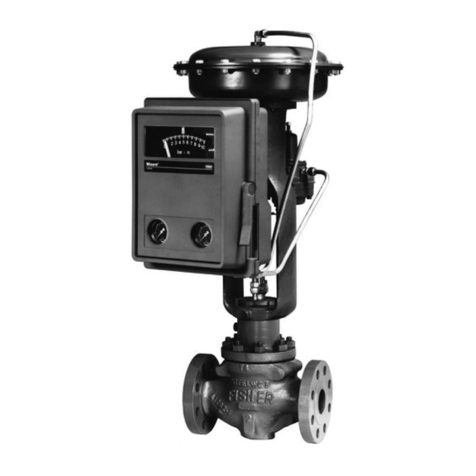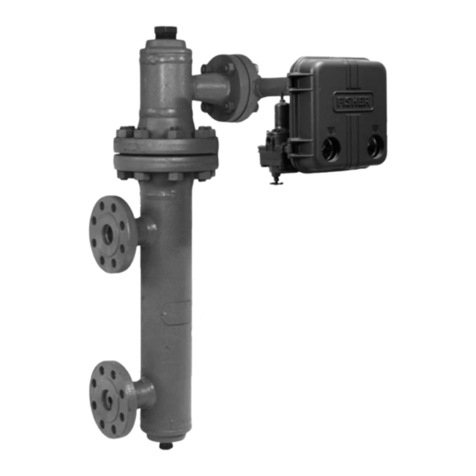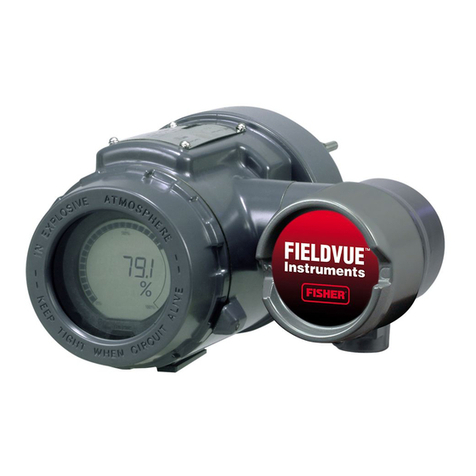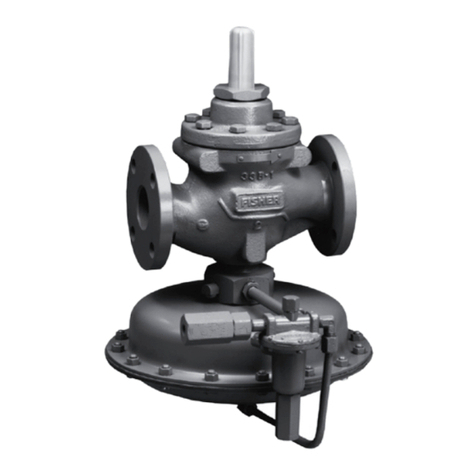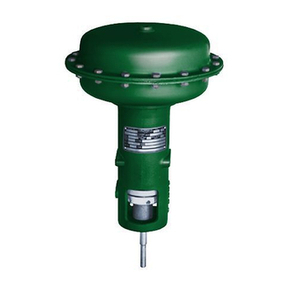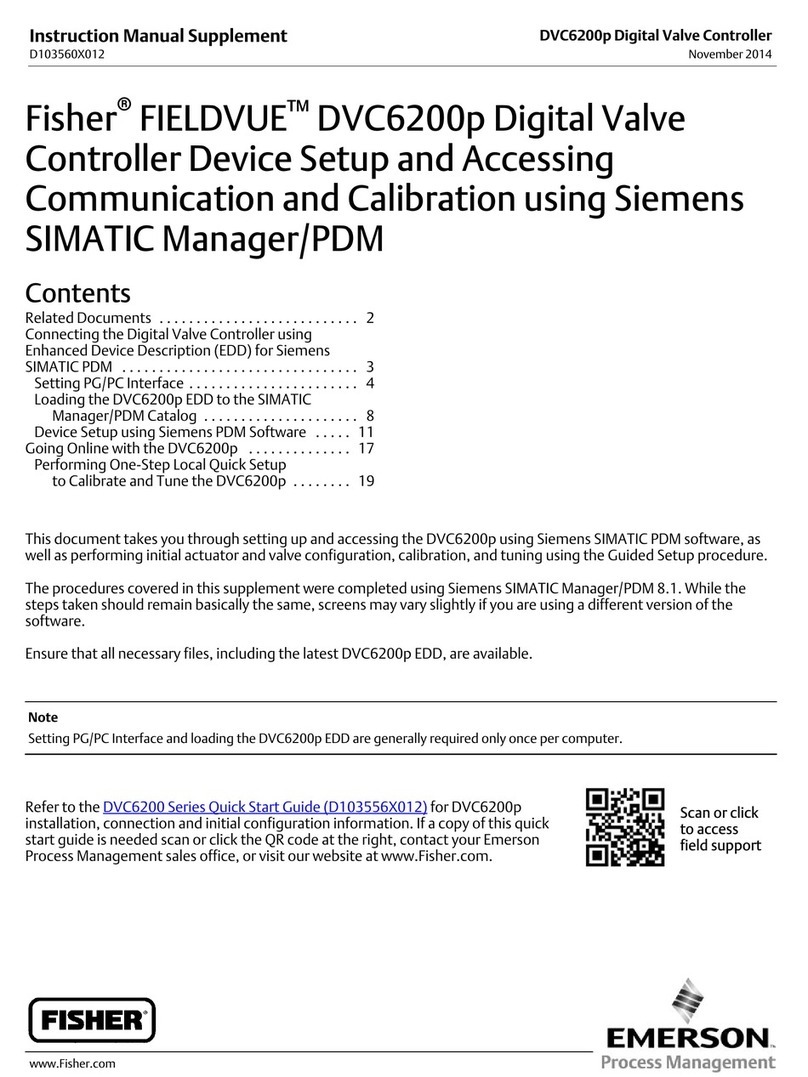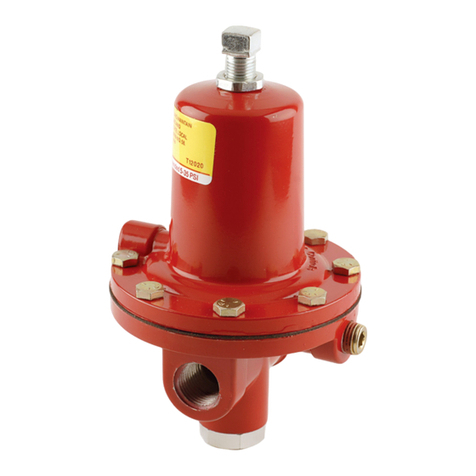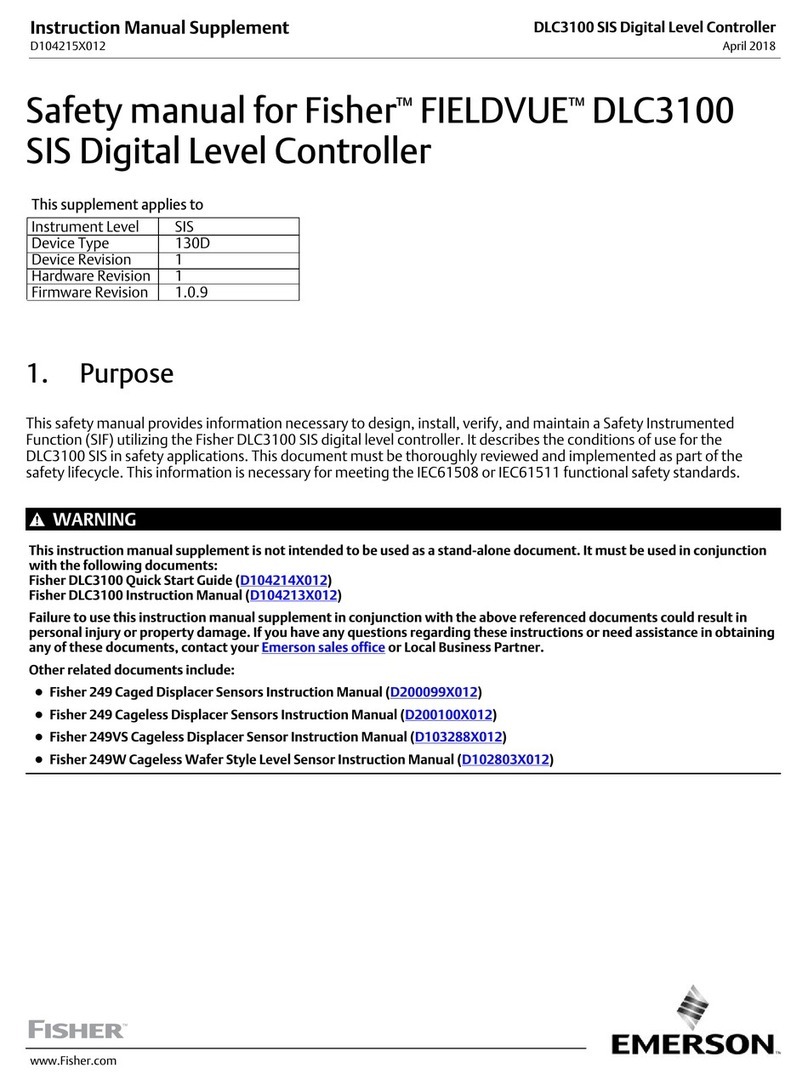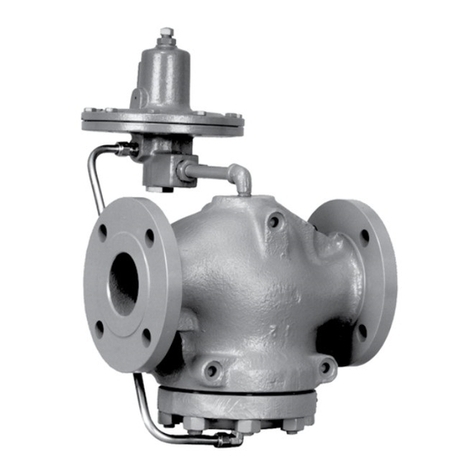
Type 667 Size 30-76 & 87
9
control signal to the actuator. Be sure
the actuator cannot suddenly open or
close the valve.
DUse bypass valves or completely
shut off the process to isolate the valve
from process pressure. Relieve process
pressure from both sides of the valve.
Drain the process media from both sides
of the valve.
DVent the power actuator loading
pressure and relieve any actuator spring
pre-compression.
DUse lock-out procedures to be sure
that the above measures stay in effect
while you work on the equipment.
DThe valve packing box may contain
process fluids that are pressurized, even
when the valve has been removed from
the pipeline. Process fluids may spray
out under pressure when removing the
packing hardware or packing rings, or
when loosening the packing box pipe
plug.
The maintenance instructions are divided into several
sections: Actuator, Top-Mounted Handwheel Assem-
bly (Adjustable Down Travel Stop), Side-Mounted
Handwheel Assembly for Size 34 through 60 Actuators
(Manual Actuator), Side-Mounted Handwheel Assem-
bly for Size 70, 76 and 87 Actuators (Manual Actua-
tor), and Casing-Mounted Travel Stops.
Actuator
This procedure describes how the actuator can be
completely disassembled and assembled. When in-
spection or repairs are required, disassemble only
those parts necessary to accomplish the job; then,
start the assembly at the appropriate step.
Key numbers are shown in figures 6, 7, or 8, unless
otherwise noted. Figure 6 shows the size 30 through
60 actuators, figure 7 shows the size 70 actuator, and
figure 8 shows the size 87 actuator.
Actuator Disassembly
Isolate the control valve from the line pressure, release
pressure from both sides of the valve body, and drain
the process media from both sides of the valve. Also
shut off all pressure lines to the power actuator, re-
lease all pressure from the actuator. Use lock-out pro-
cedures to be sure that the above measures stay in
effect while you work on the equipment.
1. Remove the tubing or piping from the connection in
the top of the yoke (key 73). For a top-loaded
construction, also remove the piping or tubing from the
connection in the upper diaphragm casing (key 1).
2. Turn the spring adjuster (key 74) counterclockwise
(toward the valve body) until all spring compression
is relieved.
WARNING
To avoid personal injury due to the sud-
den uncontrolled movement of parts, do
not loosen the stem connector cap
screws when the stem connector has
spring force applied to it.
3. If necessary, remove the actuator from the valve
body by separating the stem connector (key 31). Loos-
en the stem locknuts for the size 87 actuator, and re-
moving the stem connector nuts. For all other sizes,
separate the stem connector by loosening the stem
locknuts (keys 69 and 75) and unscrewing the two
stem connector cap screws.
4. Unscrew the spring adjuster (key 74) from the ac-
tuator stem (key 144). Also lift the spring seat and
spring (key 19 and 18) out of the yoke.
5. Remove the diaphragm casing cap screws and
nuts (keys 13 and 14), and lift off the upper diaphragm
casing (key 1).
6. Remove the following connected parts: the dia-
phragm (key 3), upper diaphragm plate (key 4), spacer
(key 2), cap screw (key 12), lower diaphragm plate
(key 71), and actuator stem (key 144). Be careful
when pulling the threads of the actuator stem through
the seal bushing (key 7) to avoid damaging the O-rings
(key 8).
7. Remove the cap screw (key 12) to separate the
parts of this assembly.
8. To remove the seal bushing, remove the snap ring
(key 72), and lift out the bushing. Inspect, and if neces-
sary, replace O-rings (8 and 9).
9. Remove cap screws (key 30), and take off the low-
er diaphragm casing (key 64) and the gasket (key 70,
size 30 through 60 and 76) or O-ring (key 70, size 70
or 87). If necessary, the down travel stops (key 77)
can be removed.
Actuator Assembly
1. Coat the O-rings (key 70, sizes 70 and 87) with lu-
bricant (key 237 or equivalent). Or, coat the gasket
with sealant (key 237 or equivalent). Place a new gas-
ket or O-ring (key 70) on the yoke (key 73). Position
the lower diaphragm casing (key 64) on the yoke, align
the holes, and insert and tighten the cap screws (key
30). If down travel stops (key 77) were removed, insert
and tighten them.
2. Coat the O-rings (keys 8 and 9) with lubricant (key
237 or equivalent) and place the O-rings in the seal
bushing (key 7).
